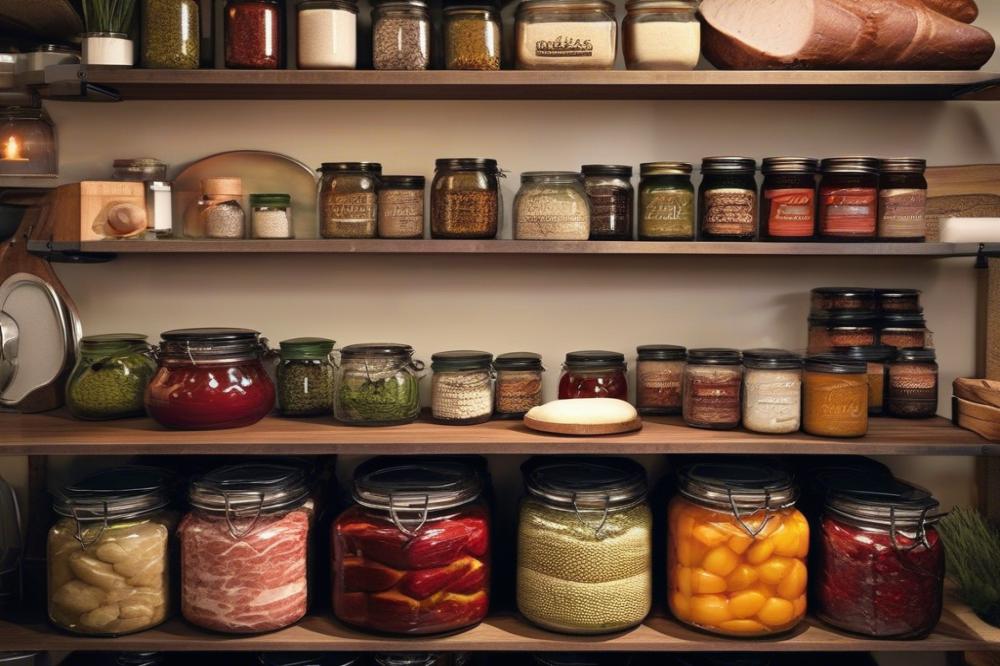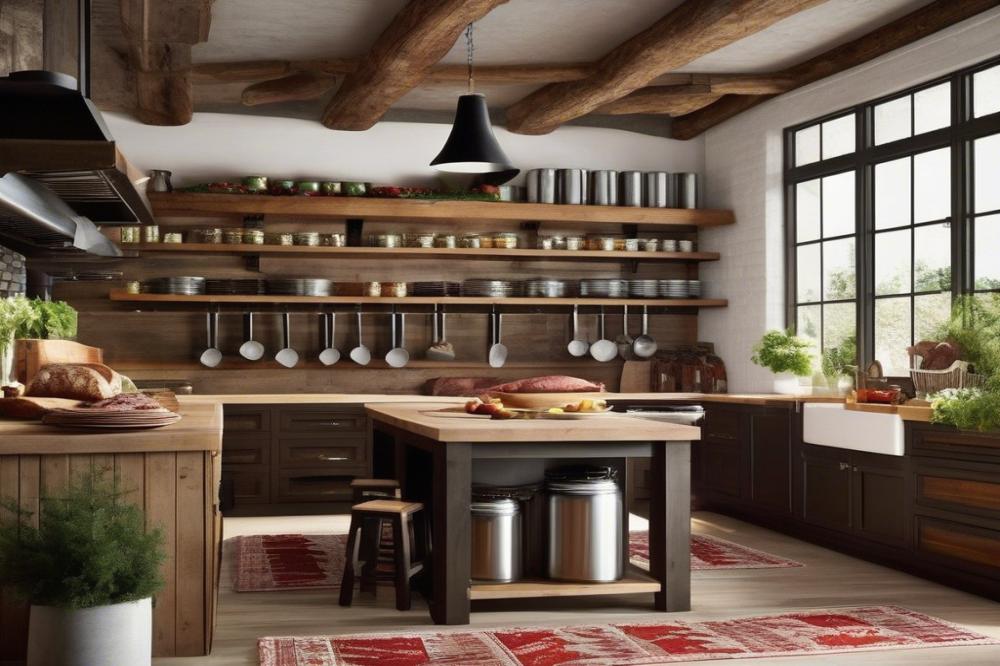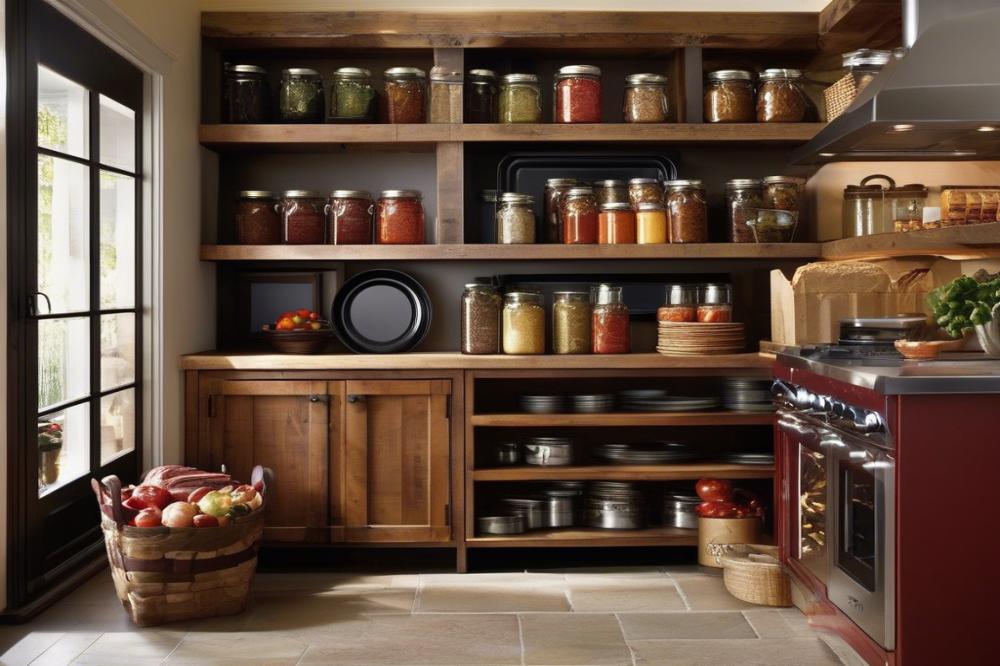Understanding Meat Preservation
Preserving meats holds great significance in both modern and traditional culinary practices. This method not only extends the shelf life of protein sources but also helps in managing food waste effectively. In uncertain times or during emergencies, having preserved items on hand can be a lifesaver for many households.
Creating and storing homemade canned meat loaf presents a practical solution for anyone looking to optimize their food storage. By canning meat, families can enjoy the comforting flavors of their favorite recipes long after the initial preparation. This form of preservation allows for the enjoyment of nourishing meals, even weeks or months later.
Shelf-stable meals are increasingly important in today’s fast-paced world. Having ready-to-eat options available reduces the need for last-minute store runs. With well-prepared items on the shelf, individuals can quickly satisfy hunger without sacrificing nutrition.
Long-term food storage can greatly ease the burden of meal preparation. By employing effective cooking tips and implementing proper techniques, preserving content within jars becomes an achievable task. Furthermore, various meat recipes provide endless opportunities for creativity while ensuring variety in daily meals.
Ultimately, the canning process not only secures flavors but captures the essence of home-cooked goodness. Whether it’s a large batch for a family gathering or small portions for quick meals, mastering this technique can enhance culinary confidence and resilience.
Understanding the Basics of Meat Preservation

Preserving meat involves various techniques aimed at extending shelf life and maintaining quality. Methods include drying, curing, freezing, and canning. Each approach has its own merits and challenges. Among these, the canning process stands out for its effectiveness in creating shelf-stable meals.
Using canning for food storage offers a practical solution for long-term food preservation. Homemade canned meat loaf provides a convenient way to have protein-rich meals readily available. This method not only extends the life of the meat but also retains flavor and texture. Whether for emergency supplies or simply to save time, knowing how to properly can meat can be invaluable.
Overview of the Canning Process
The canning process involves several key steps. First, preparing the meat involves grinding and seasoning according to preferred meat recipes. Following this, the mixture is packed into jars, leaving necessary headspace. Sealing the jars carefully is crucial to prevent any air from entering. Finally, placing jars in a pressure canner allows for necessary heat to kill bacteria and create a vacuum seal. It’s vital to monitor the pressure level throughout the process to achieve safe results.
Safety Tips for canning meats
Adhering to safety standards in meat preservation is essential. Always use tested recipes and follow precise instructions to avoid spoilage. A pressure canner is recommended because it reaches higher temperatures than boiling water, vital for safely processing meats. Ensure that jars are clean and fit for canning. Recognize signs of spoilage such as bulging lids or off odors; these indicate the contents may be unsafe to eat. Storing your canned goods in a cool, dark place also safeguards against spoilage and extends longevity.
Cooking tips for using canned meat involve incorporating it into various dishes. From casseroles to sandwiches, the possibilities are extensive. Planning meals around canned ingredients can streamline weekly cooking, making it efficient while maximizing convenience.
Ingredients List for Homemade canned meat Loaf

Creating a delightful and hearty canned meat loaf requires a variety of ingredients that work together to make a flavorful dish. Start with ground beef or an alternative meat like turkey or pork. The choice of meat can be based on personal preference or dietary needs.
To enhance the texture, you will need breadcrumbs or oats. Both options serve as binders, helping to hold the mixture together during cooking and canning. Eggs are another crucial component; they help in binding the ingredients while adding moisture.
Chopped onion adds flavor, bringing depth to the dish. Additionally, minced garlic provides a lovely aroma and a subtle kick. Salt and pepper serve to season the mixture appropriately, balancing the flavors.
For those looking to customize their creation, various spices and herbs can be introduced. Consider adding basil, oregano, or even a hint of cayenne pepper for heat. These optional additions can elevate the flavor profile significantly, making it more unique.
Nutrition is vital when preparing meals for long-term food storage. Ground beef typically contains higher fat content, which contributes to its calorie density. On the other hand, leaner meats may offer less fat and fewer calories. Breadcrumbs are mainly a source of carbohydrates, while eggs provide protein along with essential vitamins.
On the whole, looking at the nutritional information helps in planning meals, ensuring a balanced intake. Understanding the caloric content and nutrient values of each ingredient is important when preserving meat loaf. This awareness aids in creating healthy, shelf-stable meals that are convenient for busy lifestyles.
As you embark on this canning process, remember that selecting high-quality ingredients contributes significantly to the end result. Quality meats and fresh vegetables lead to a better homemade canned meat loaf, which will be more enjoyable when opened later for a meal.
Cooking Instructions for Meat Loaf

Begin by assembling the ingredients. Typical components include ground beef, breadcrumbs, eggs, onions, and various spices. For a unique flavor, consider adding Worcestershire sauce or bell peppers. Use a large mixing bowl to combine these ingredients thoroughly. Ensure an even distribution, as this affects the final texture.
Next, form the mixture into loaf shapes suitable for canning. Consider crafting smaller loaves that fit comfortably into jars. Each loaf should be about the size of a small fist. This sizing allows for proper heat distribution during the canning process. Wet your hands lightly to make shaping easier and less sticky.
Cooking Process and Monitoring Temperature
Proceed to cook the formed loaves before canning. An oven preheated to 350°F (175°C) works best. Bake them for around 30-40 minutes until they reach an internal temperature of 160°F (71°C). Use a meat thermometer for accurate results. Cooked meat retains moisture, enhancing flavor. Monitoring temperature is crucial to meat preservation. Allow the loaves to cool for a few minutes before handling.
Preparing Jars and Lids for Canning
Gather the canning jars and lids. Clean each jar thoroughly in hot, soapy water, then rinse well. Sterilizing jars in boiling water for 10 minutes can be beneficial. Lids should also undergo a brief boil to promote a secure seal. Proper preparation of jars is essential for successful homemade canned meat loaf.
Filling Jars with Meat Loaf and Sealing
Fill each jar with the cooled loaf mixture. Leave about an inch of headspace at the top; this space accommodates expansion during canning. Gently pack the mixture down to remove air pockets. After filling, wipe the rims of the jars with a clean cloth to ensure a proper seal. Place the prepared lids on top and screw the metal bands until fingertip tight.
Canning Process in Detail
Select the canning method you prefer. Pressure canning is recommended for low-acid meats. Follow the manufacturer’s instructions for your pressure canner. Process the jars for approximately 75 minutes at 10-12 pounds of pressure, depending on your altitude. Alternatively, a water bath canning method might work for acidified versions of meat preservation. Ensure that the jars are fully submerged. Once the time is up, carefully remove the jars and place them on a clean towel to cool undisturbed.
As the jars cool, watch for the lids to seal. You will hear a popping sound when the seal forms. Verify the seal by pressing down in the center of each lid. Sealed lids should not flex up or down. Store the jars in a cool, dark place for long-term food storage. Properly canned, they become shelf-stable meals, ready for enjoyment at your convenience.
Tips for Successful Canning and Storage
Common Mistakes to Avoid in Canning Meat Loaf
Canning meat can lead to food safety issues if not done correctly. One common error is not using the right pressure level. It is critical to follow a tested recipe that specifies the correct pressure gauge. Underprocessing is another significant risk, as it may allow bacteria to thrive. Avoid using jars that have cracks or chips, as these can cause seals to fail. Failing to leave adequate headspace can lead to spoilage. Additionally, skipping the recommended processing time can compromise the safety of your canned food.
Cooking Tips for Perfect Meat Loaf Texture
Creating a great texture for your homemade canned meat loaf is essential. Choose a blend of meats, like beef and pork, for a more flavorful result. Incorporating breadcrumbs or oats helps bind the mixture and maintain moisture. Adding chopped onions, garlic, or herbs can elevate the flavor profile significantly. Mix the ingredients thoroughly but avoid overworking the meat to prevent a dense texture. Baking the loaf before canning aids in retaining moisture. Allow it to cool before cutting to ensure clean slices for the canning process.
Best Practices for Labeling and Storing Canned Meat
A proper labeling system simplifies food storage and rotation. Include the date of canning and the type of meat on the label. Use waterproof labels to prevent smudging and fading over time. Keep canned items organized on shelves and in a cool, dark place. Excessive heat and light can degrade the quality of stored food. Always store jars upright to prevent leakage and create an effective seal. Practice the first-in, first-out method to maintain freshness and minimize waste.
Ideal Conditions for Long-Term Storage
A stable environment is vital for extending the life of your canned goods. Temperatures should ideally range between 50°F and 70°F. High humidity can lead to rust on jars and spoilage from condensation. To enhance the longevity of your canned meat, choose a dark storage area, such as a pantry or basement. Regularly check jars for signs of bulging or leaks. Such issues indicate potential spoilage. Consistency in storage conditions will yield the best results for shelf-stable meals.
Creative Ways to Use Canned Meat Loaf
Recipes and Ideas for Using Canned Meat Loaf
Canned meat offers various possibilities for meal preparation. One way to begin is by making a quick sandwich. Use slices of bread, lettuce, and some mustard for a satisfying lunch. Another option is to mix it into a hearty casserole. Combine chopped canned meat with potatoes and vegetables, then bake until it’s hot and bubbling.
Consider adding canned meat to a savory frittata. Whisk eggs together and pour over sautéed vegetables. Incorporate pieces of the meat before cooking. This creates a protein-rich dish that can be served any time of day. You may also like to prepare a meat sauce for pasta. Simmer the canned meat in tomato sauce with spices for a flavorful meal.
Combining Canned Meat in Meals and Dishes
Baking becomes a breeze when utilizing preserved meat. Fold portions into biscuit dough for a meaty breakfast treat. The flavor melds wonderfully, creating a unique experience. Soups can also benefit from the addition of canned meat. Simply chop it and throw it into simmering broth with vegetables and grains.
Another idea involves transforming canned meat into a hearty chili. Mix it with beans, tomatoes, and spices for a robust meal. Serving it over rice or cornbread enhances the overall dish. Canned meat works well in stuffed peppers, too. Hollow out some peppers and fill them with a mixture of cooked rice and meat for a nutritious dinner option.
Nutritional Benefits of Using Preserved Meat
Using homemade canned meat loaf provides dietary advantages. It can be a great source of protein, essential for muscle health. Furthermore, preserved meats often contain fewer preservatives compared to store-bought options. This supports a healthier lifestyle focused on whole ingredients.
When stored properly, canned meat can be part of long-term food storage plans. Such meals are shelf-stable and can be accessed in times of need. This also contributes to waste reduction. Meal planning with preserved meat simplifies grocery shopping and reduces costs over time. Cooking tips suggest balancing meals with vegetables and whole grains to achieve a well-rounded diet.
Experimentation in the kitchen can produce delightful outcomes with canned meat. As you explore these recipes and ideas, you can find creative ways to enjoy the benefits that come from meat preservation.
Final Thoughts on Preserving Meat Loaf
Preserving meat loaf offers a variety of benefits that cater to modern culinary needs. This method not only enhances shelf life but also provides convenient meal options for busy days. The taste remains intact, and homemade canned meat retains much of its original flavor and texture, making it an appealing choice. Additionally, this practice minimizes food waste, allowing for the use of excess ingredients effectively.
Individuals are encouraged to try their hand at making and canning this delicious dish. Experimenting with various seasonings and ingredients can lead to personalized flavors that suit individual preferences. Remember, every batch provides an opportunity to create something distinctive. This process allows one to explore the joy of home canning while developing skills that may be useful for years to come.
As we become more conscious of food preservation and storage methods, traditional techniques remain invaluable. Dedicating time to learn how to preserve meat loaf presents not only a sustainable choice but fosters a deeper connection with our food. This endeavor can transform routine cooking into a rewarding experience. Embrace the process, savor the outcome, and discover the satisfaction that comes from preparing meals that last. Canning offers more than convenience; it offers a journey back to fundamental cooking practices that many cherish.



